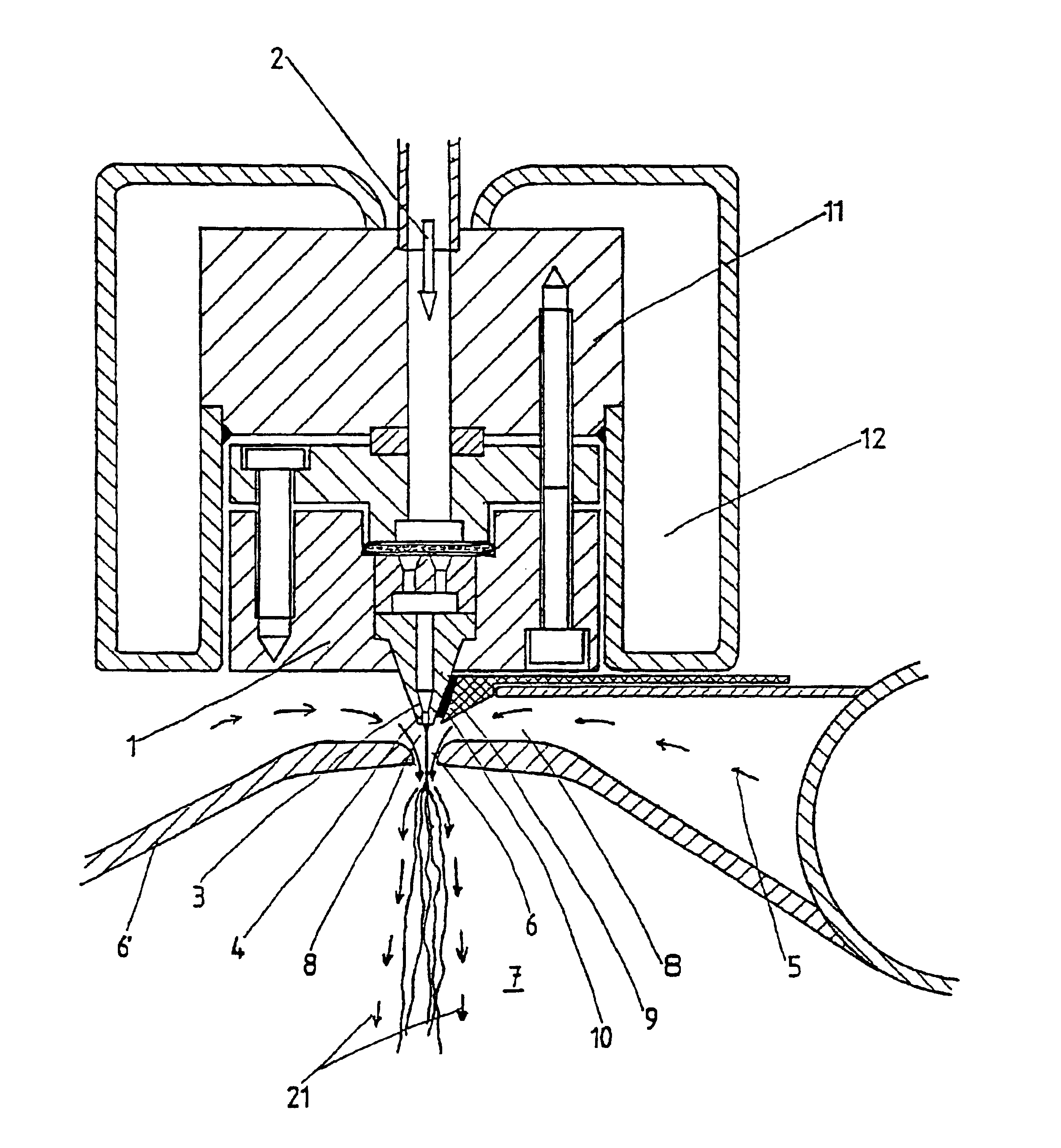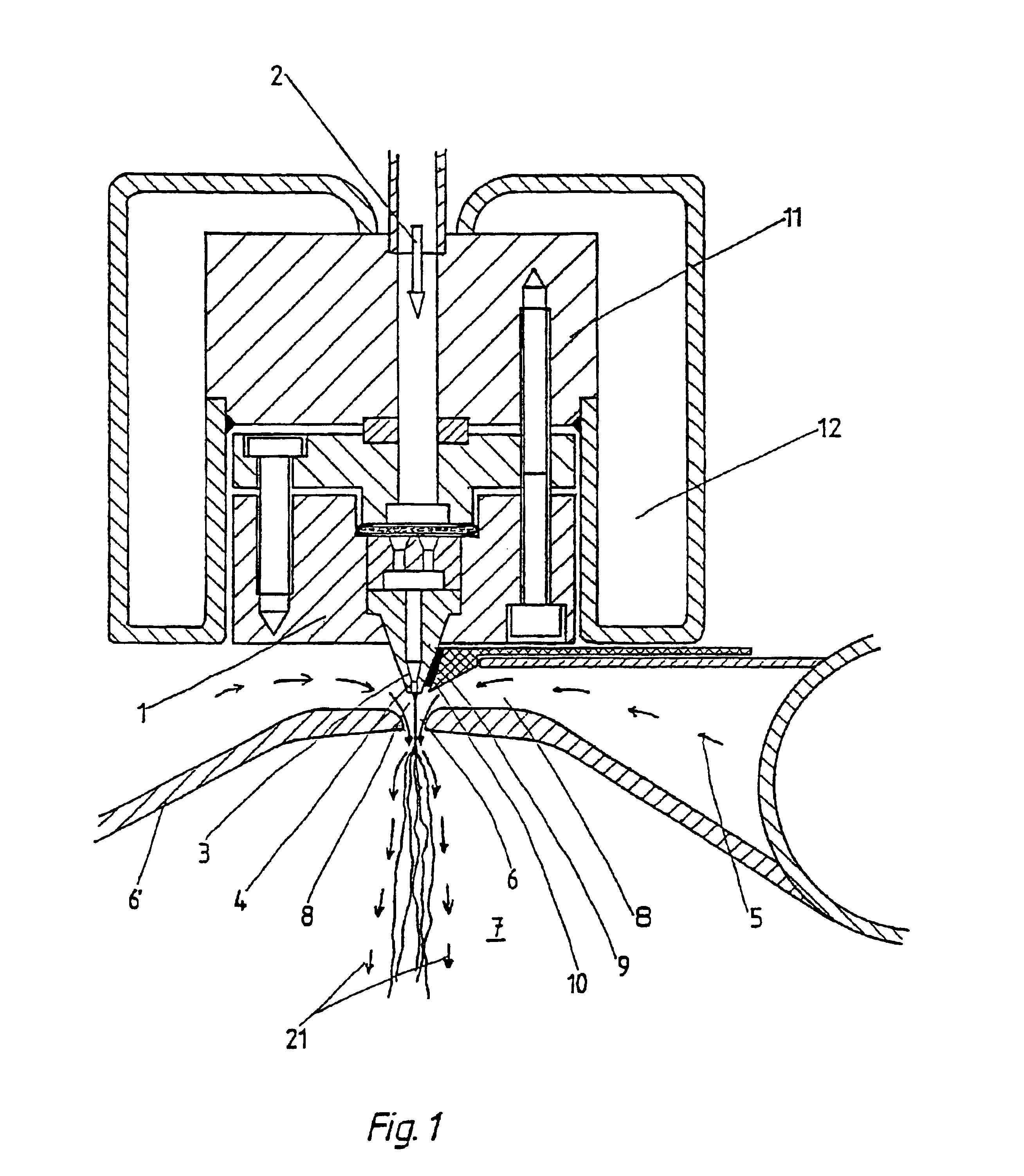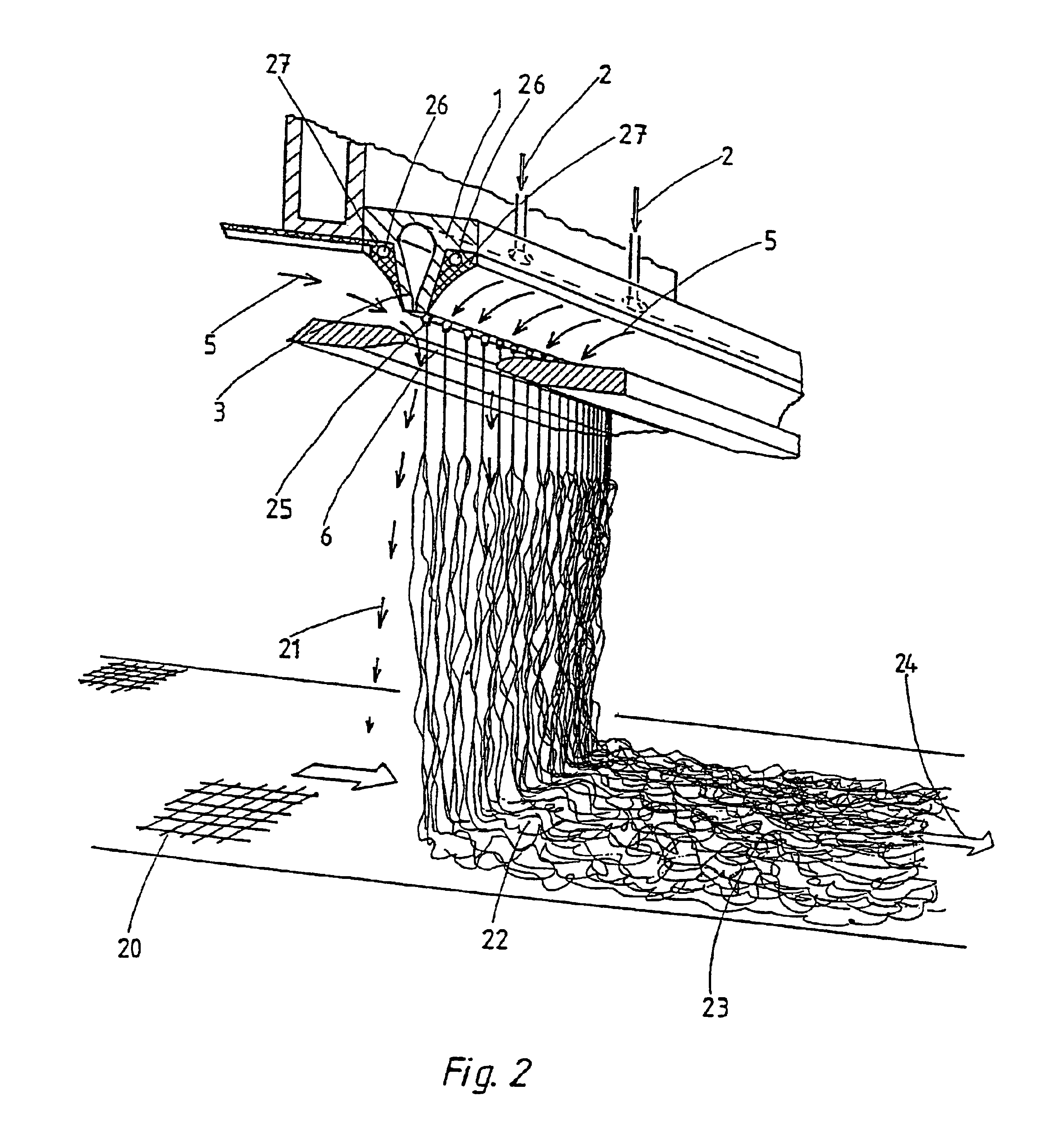Method and device for the production of an essentially continous fine thread
a technology of essentially continous thread and production method, which is applied in the direction of filament/thread forming, spinnerette packs, non-woven fabrics, etc., can solve the problems of high energy expenditure, high cost, and high cost of hot air heating, and achieves reduced strength, reduced cost, and simple and economical methods.
- Summary
- Abstract
- Description
- Claims
- Application Information
AI Technical Summary
Benefits of technology
Problems solved by technology
Method used
Image
Examples
example 2
With the apparatus from example 1, polyamide 6 (PA6) with a relative viscosity .eta..sub.rel =2.4 was fed to a nozzle orifice 3 with 58 holes 4 at intervals of 1.5 mm and with a diameter of 0.4 mm. The distance from the outlet openings of the holes 4 to the narrowest cross-section of the Laval nozzle was 12.0 mm (the outlet openings ended 2.0 mm above the imaginary plane of the Laval nozzle plate). With a throughput per hole 4 of 0.25 g / min and a pressure in the chamber 8 of 0.02 bar above the environment, filaments with a mean diameter d.sub.50 of 4.1 .mu.m were produced.
example 3
With the apparatus from example 1, polypropylene (PP) with a MFI of 25 (230.degree. C., 2.16 kg) was fed to a nozzle orifice 3 with three holes 4 at intervals of 15 mm and with a diameter of 1.0 mm. Individual rotationally symmetrical Laval nozzles 6 were arranged in the Laval nozzle plate 3 coaxially with the three holes 4. The outlet openings of the holes 4 were arranged exactly at the level of the upper edge of the Laval nozzle plate and had a distance of 4.5 mm from the narrowest cross-section of the Laval nozzles 6. At a pressure in the chamber 8 of 0.75 bar above the environment 7 and with a throughput per hole 4 of 9.3 g / min, single filaments with a mean diameter d.sub.50 of 4.9 .mu.m were produced. In this case a theoretical thread count of 123 results.
Of interest in this manner of operation is the observation that the bursting point compared with example 1 has clearly shifted in the direction of the narrowest cross-section of the Laval nozzles 6. Whereas in the case of the ...
PUM
| Property | Measurement | Unit |
|---|---|---|
| diameters | aaaaa | aaaaa |
| diameters | aaaaa | aaaaa |
| diameters | aaaaa | aaaaa |
Abstract
Description
Claims
Application Information
 Login to View More
Login to View More - R&D
- Intellectual Property
- Life Sciences
- Materials
- Tech Scout
- Unparalleled Data Quality
- Higher Quality Content
- 60% Fewer Hallucinations
Browse by: Latest US Patents, China's latest patents, Technical Efficacy Thesaurus, Application Domain, Technology Topic, Popular Technical Reports.
© 2025 PatSnap. All rights reserved.Legal|Privacy policy|Modern Slavery Act Transparency Statement|Sitemap|About US| Contact US: help@patsnap.com



